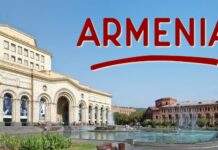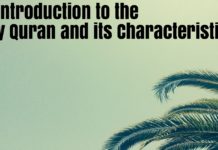How Many Kinds of Verb and Auxiliaries?
How many kinds of verb and auxiliaries are:– Verbs use to explain the activities of the doer and the receiver in a different context. They are based on present, past, future and other conditions.
THE VERB
A Verb is a word which is used for saying something about some person or thing; as, Birds fly. It is a very important word for there can be no sentence without a Verb.
The Kinds of verb and auxiliaries
There are three kinds of the Verb:
- Transitive Verb
- In transitive Verb
- Auxiliary Verb
Examples of verb and auxiliaries :
- The boy bought a toy.
- The man writes.
- He has come.
In sentence 1, the action denoted by the Verb bought passes over from the doer or subject boy to an object toy. The verb bought therefore is called a “Transitive Verb”.
Note: – Transitive means passing over.
In sentence 2, the action denoted by the Verb writes stops with the doer or subject man and does not pass over, to create an object. The verb writes therefore is called an Intransitive Verb.
Note: – Transitive means not passing over.
In sentence 3, the Verb has is a helper to the principal verb come to form its Perfect Tense called an Auxiliary Verb. It not only helps to form the tense of the main verb. It also loses its original meaning because the independent word has meant to possess. There is no idea of possession in this sentence.
Note:—Auxiliary means helping.
The Transitive Verb: -A verb is Transitive, if the action denoted by a verb passes over from the doer or subject to an object.
The Intransitive Verb: -A verb is Intransitive if the action denoted by a verb stops with the doer or subject and does not pass over to create an object.
The Auxiliary Verb:- An Auxiliary Verb is one which loses its original meaning and only helps a principal verb.
The Chief Auxiliaries Verbs are :
The various forms of to be (is, are, am, was, were, been, being), have, has, had, shall, will, may, might, do, does, must, can, could, should, would.
Direct and Indirect Objects Some Transitive Verbs take two objects after them. One of them is the name of something and the second is the name of some person or animal. The name of the thing is the Direct Object. And the person or animal is the Indirect Object; as :
- He narrated me (Indirect) a story (Direct).
- I shall give you (Indirect) a pen (Direct).
The given verbs as give, ask, offer, promise, tell, etc., need objects after them.
Note:–The object can be found by putting a question with, whom or what after the verb. Again if the question is possible and requires an answer, the verb is Transitive; if not, it is an Intransitive.
WEAK AND STRONG VERBS
There are two classes of the verbs. According to how they form the Past Tense from the Present. These two classes are:
- Weak Verb
- Strong Verb
The Weak Verbs:-If a verb forms its Past Tense by adding ed, d, or t to the Present, without or with any inside vowel change, it is called a Weak Verb; as:
| Present tense | Past Tense |
| Want | Wanted |
| Believe | Believed |
| Spend | Spent |
| Buy | Bought |
| Sell | Sold |
The Weak Verb
The Strong Verbs:-If a verb forms its Past Tense by merely changing the inside vowel of the Present Tense, without having ed, d, or t, added to the Present, it is called a Strong Verb; as
| Present Tense | Past Tense |
| Come | Came |
| See | Saw |
The strong verb
Note:–Such verbs are called Strong Verbs because they can make their Past Tense without having anything added.
























Rattling nice style and good content, nothing else we want : D.
Профессиональный сервисный центр по ремонту бытовой техники с выездом на дом.
Мы предлагаем:ремонт крупногабаритной техники в москве
Наши мастера оперативно устранят неисправности вашего устройства в сервисе или с выездом на дом!
Получить первую онлайн консультацию психолога чате. Психолог помогающий искать решения в непростых психологических ситуациях. Онлайн чат с психологом без регистрации.
Психолог, Сайт психологов.
Психологическая помощь онлайн.
Психологическое консультирование заключается в том, чтобы помочь клиенту разобраться в своих проблемах и вместе с ним найти пути выхода из сложной ситуации.
Запись на прием, оплата, подробная информация о специалистах и отзывы клиентов.
45555 проверенных отзывов.
Эмоциональное состояние: тревога, депрессия, стресс, эмоциональное выгорание.
Онлайн сессия от 37967 руб.
Личные или онлайн-встречи с высококвалифицированными специалистами.
Консультация в кризисных состояниях.
платформа для покупки аккаунтов продажа аккаунтов
маркетплейс аккаунтов маркетплейс аккаунтов
услуги по продаже аккаунтов профиль с подписчиками
Психолог онлайн анонимно. В переписке у психолога. Психологическая и информационная онлайн-помощь.
Раздражительность на членов своей семьи.
Консультация в кризисных состояниях.
Записаться на консультацию.
маркетплейс аккаунтов маркетплейс аккаунтов
маркетплейс аккаунтов соцсетей купить аккаунт
магазин аккаунтов социальных сетей продажа аккаунтов соцсетей
магазин аккаунтов социальных сетей маркетплейс аккаунтов соцсетей
купить аккаунт купить аккаунт
платформа для покупки аккаунтов перепродажа аккаунтов
безопасная сделка аккаунтов https://birzha-akkauntov-online.ru/
магазин аккаунтов https://marketplace-akkauntov-top.ru/
магазин аккаунтов социальных сетей биржа аккаунтов
площадка для продажи аккаунтов купить аккаунт
магазин аккаунтов профиль с подписчиками
перепродажа аккаунтов продать аккаунт
профиль с подписчиками маркетплейс для реселлеров
Buy accounts Account market
Gaming account marketplace Profitable Account Sales
Profitable Account Sales Sell Account
Purchase Ready-Made Accounts Accounts market
Sell Pre-made Account Account Trading
Social media account marketplace Verified Accounts for Sale
Account Exchange Service Account Catalog
Account Acquisition Online Account Store
Account Purchase Account Trading
Guaranteed Accounts Account Store
Social media account marketplace Account Selling Service
social media account marketplace account buying platform
website for selling accounts accounts marketplace
sell pre-made account ready-made accounts for sale
Чат с психологом в телеге. Чат психологической поддержки. Психолог онлайн анонимно.
Психологическая помощь онлайн.
Нужен хороший психолог?
Личные или онлайн-встречи с высококвалифицированными специалистами.
Решим вместе вашу проблему.
account marketplace buy and sell accounts
Психолог помогающий искать решения в непростых психологических ситуациях. Психолог оказывает помощь онлайн в чате. Получите консультацию онлайн-психолога в чате прямо сейчас.
Психологическое консультирование заключается в том, чтобы помочь клиенту разобраться в своих проблемах и вместе с ним найти пути выхода из сложной ситуации.
Получить поддержку по широкому кругу вопросов.
Мы обязательно поможем преодолеть эмоциональный кризис, избавиться от тревожности и апатии, справиться со стрессом и депрессией, связанными с неуверенностью и многим другим.
Психологическое консультирование.
account trading platform https://accountsmarketbest.com/
account trading platform accounts for sale
account acquisition sell account
database of accounts for sale buy accounts
account market account acquisition
accounts marketplace secure account sales
account store account exchange service
accounts for sale website for buying accounts
account purchase account selling service
account catalog sell accounts
sell account sell account
account selling platform website for selling accounts
account exchange service profitable account sales
account selling service account purchase
accounts marketplace accounts market
account market database of accounts for sale
database of accounts for sale accounts for sale
secure account purchasing platform secure account purchasing platform
accounts marketplace verified accounts for sale
website for selling accounts sell pre-made account
account selling platform account buying platform
account buying platform database of accounts for sale
social media account marketplace account buying service
secure account sales buy account
account trading platform https://accounts-offer.org
find accounts for sale https://accounts-marketplace.xyz
sell accounts account marketplace
accounts market https://social-accounts-marketplaces.live
ready-made accounts for sale https://accounts-marketplace.live/
account trading service https://social-accounts-marketplace.xyz/
buy account account marketplace
buy pre-made account https://buy-accounts-shop.pro/
accounts market https://social-accounts-marketplace.live
website for buying accounts https://buy-accounts.live/
online account store https://accounts-marketplace.online/
purchase ready-made accounts https://accounts-marketplace-best.pro
покупка аккаунтов https://akkaunty-na-prodazhu.pro
продажа аккаунтов магазины аккаунтов
площадка для продажи аккаунтов маркетплейсов аккаунтов
купить аккаунт https://akkaunt-magazin.online/
биржа аккаунтов https://akkaunty-market.live/
маркетплейс аккаунтов https://kupit-akkaunty-market.xyz
продать аккаунт купить аккаунт
покупка аккаунтов online-akkaunty-magazin.xyz
покупка аккаунтов https://akkaunty-dlya-prodazhi.pro/
маркетплейс аккаунтов купить аккаунт
facebook ad account buy buy-adsaccounts.work
buy fb ad account https://buy-ad-accounts.click/
facebook ad account buy buy facebook advertising accounts
buy facebook ads manager https://buy-ads-account.click
buy aged facebook ads account https://ad-account-buy.top
buy fb account https://buy-ads-account.work/
buy facebook ad accounts https://ad-account-for-sale.top
buy facebook account https://buy-ad-account.click
Этот информативный материал предлагает содержательную информацию по множеству задач и вопросов. Мы призываем вас исследовать различные идеи и факты, обобщая их для более глубокого понимания. Наша цель — сделать обучение доступным и увлекательным.
Получить дополнительные сведения – https://medalkoblog.ru/
buy facebook ad accounts buy old facebook account for ads
buy google agency account https://buy-ads-account.top
buy aged google ads account https://buy-ads-accounts.click
buy facebook advertising facebook ads account for sale
buy google ads accounts https://ads-account-for-sale.top
buy verified google ads account https://ads-account-buy.work
buy old google ads account buy verified google ads accounts
buy google ads account google ads account seller
I don’t think the title of your article matches the content lol. Just kidding, mainly because I had some doubts after reading the article.
google ads agency accounts https://sell-ads-account.click
buy verified facebook buy bm facebook
buy google ads https://buy-verified-ads-account.work
facebook business manager buy https://buy-business-manager-acc.org/
fb bussiness manager buy facebook business account
buy bm facebook https://buy-verified-business-manager.org
buy facebook business managers buy-business-manager-verified.org
verified business manager for sale https://verified-business-manager-for-sale.org/
buy tiktok ad account https://buy-tiktok-ads-account.org
buy tiktok ads accounts https://tiktok-agency-account-for-sale.org
buy tiktok business account https://buy-tiktok-ads-accounts.org
tiktok ads account for sale https://buy-tiktok-business-account.org
Предлагаем услуги профессиональных инженеров офицальной мастерской.
Еслли вы искали ремонт холодильников gorenje в москве, можете посмотреть на сайте: ремонт холодильников gorenje цены
Наши мастера оперативно устранят неисправности вашего устройства в сервисе или с выездом на дом!
Профессиональный сервисный центр по ремонту Apple iPhone в Москве.
Мы предлагаем: срочный ремонт iphone в москве
Наши мастера оперативно устранят неисправности вашего устройства в сервисе или с выездом на дом!
buy amoxicillin online – comba moxi buy amoxicillin without a prescription
fluconazole order – this buy fluconazole 200mg pill
cenforce order online – https://cenforcers.com/ cenforce 50mg cheap
buy facebook accounts for ads website for selling accounts account buying platform
cialis headache – this how many 5mg cialis can i take at once
buy facebook old accounts accounts marketplace accounts marketplace
cialis 5mg how long does it take to work – this cialis side effects
cheap zantac – https://aranitidine.com/# order ranitidine generic
viagra 50 mg tablet – https://strongvpls.com/# cheap viagra new zealand
This is the kind of advise I find helpful. gnolvade.com
More posts like this would persuade the online play more useful. https://buyfastonl.com/azithromycin.html
This is the big-hearted of criticism I rightly appreciate. https://ursxdol.com/sildenafil-50-mg-in/
This is the type of post I find helpful. https://prohnrg.com/product/loratadine-10-mg-tablets/
I couldn’t turn down commenting. Profoundly written! https://aranitidine.com/fr/levitra_francaise/
I don’t think the title of your article matches the content lol. Just kidding, mainly because I had some doubts after reading the article.
Palatable blog you be undergoing here.. It’s intricate to find elevated worth writing like yours these days. I honestly respect individuals like you! Rent care!! https://ondactone.com/product/domperidone/
I couldn’t weather commenting. Warmly written!
https://proisotrepl.com/product/cyclobenzaprine/
Thanks for putting this up. It’s understandably done. http://www.dbgjjs.com/home.php?mod=space&uid=531850
purchase forxiga – buy dapagliflozin 10mg online cost forxiga 10mg
Если ищете качественную информацию и полезные сервисы – есть отличное решение!
Обязательно посмотрите статью: 6 электромясорубок 2025 года с высокой производительностью и тихой работой
На портале собрано всё необходимое: статьи, новости, справочники, онлайн-инструменты. Экономит много времени на поиске нужной информации!
buy generic orlistat – how to buy orlistat order orlistat 120mg pills
Thanks for sharing. It’s first quality. http://mi.minfish.com/home.php?mod=space&uid=1420983
13
Профессиональный сервисный центр по ремонту техники.
Мы предлагаем: Ремонт серверов DEPO во Владимире
Наши мастера оперативно устранят неисправности вашего устройства в сервисе или с выездом на дом!
You can protect yourself and your stock by way of being wary when buying pharmaceutical online. Some pharmaceutics websites manipulate legally and sell convenience, secretiveness, bring in savings and safeguards for purchasing medicines. buy in TerbinaPharmacy https://terbinafines.com/product/motrin.html motrin
Thanks on putting this up. It’s understandably done. this
The depth in this serving is exceptional.